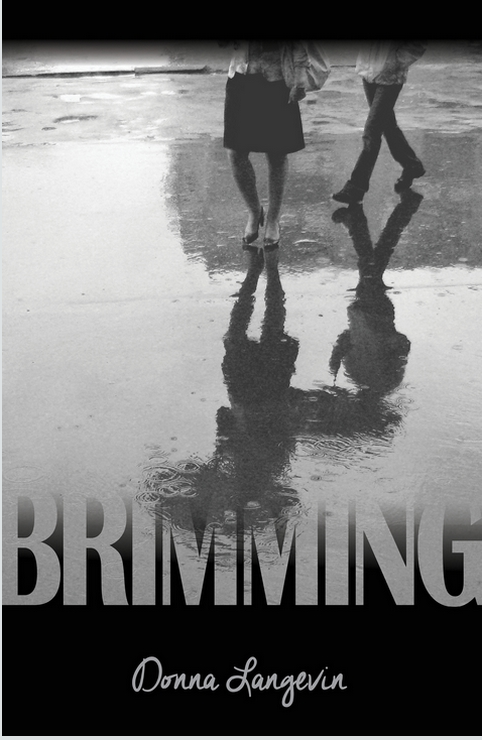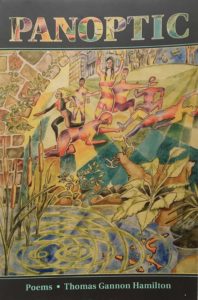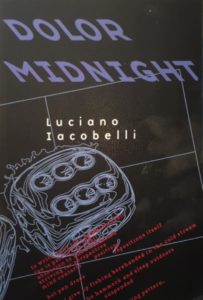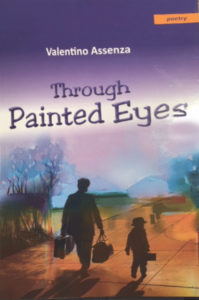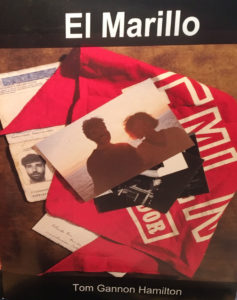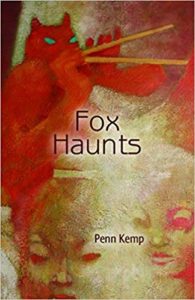Steven McCabe’s Meme Noir , Quattro Books, 2020. $20.00

The bold figurative abstract painting by the author, gracing the cover of Meme Noir, hints at the sophistication of its contents. At 85 pages, we’re promised a tightly edited literary work and as with any Quattro edition, you can expect a quality read. But nothing can prepare you for Steven McCabe’s ingenious writing. Owing to the clarity and scope of its vision, its originality and unique style, Meme Noir is a work of international significance. It speaks from a wealth of cultural memory to a world increasingly in need of reminding where it has been.
“ I wore black pants, and a thin black turtleneck, with bare feet, impersonating imaginary beatniks. The owner of the resort, where I washed dishes, said, ‘You look like the Viet Cong slipping through the shadows’.” Drawn from events spanning decades and traversing more than one country, the anecdotal entries, each a tableau vivant, at once flowing and pooling in the reader’s mind, constitute prose poems of the highest order, presented with transparency and without pretension. “When Eurydice came home from work and said ‘There’s a spoon in the sink’ I knew it was over. I ran cold water over the silvery spoon. Not now, but soon.”
McCabe’s style, one combining poetic concision and eloquence with the insight and accessibility of great journalism, seems inconceivable without his plural lenses, shaped mainly, though not exclusively, within the borders of Canada and the USA. “We gave the waitress, wearing a pale-green uniform dress, a hard time. She said ‘You won’t talk so smart when you’re in Vietnam’.” Differently situated perspectives afford the author acute cross-cultural vision and impressive historical depth perception; the result is a kaleidoscopic journey that coheres beautifully.
“ I lay beneath the ceiling light, mesmerized by the cut glass patterns emanating mysterious energies of the cosmos. The party went on around me”.
Meme Noir achieves its integrity through craftsmanship, for, easy as it is to read, this fluency could only come from devotion, one that weds passion with discipline and matches imagination with the rigours of composition. It’s no mere diary. McCabe’s subtle ingenuity affects us through a series of dawnings, layered within each vignette and cumulative over the course of the book as a whole.
“My parents left me in charge. After everybody was in bed I aimed my brother’s telescope at the moon. The close-up craters overwhelmed me with dread. I put the telescope down quickly.” A curious mimesis occurs, in which McCabe’s episodic approach is recapitulated in the reader’s own thought processes, dappled of course, with personal memory. “I used a phrase, my father often used, during a visual art workshop in a school. I said ‘Now you’re cooking with gas!’ The student said “What?”. The teacher said ‘What gas?’.”
Wisdom about the terrain upon which we collectively dwell cannot be had without the successful cultivation of humour. This basic tenet of Mother Wit is put into practice here in a mercifully uncontrived way. McCabe has a green thumb and the reader feasts on a crop that gives blessed relief from the force-grown, genetically modified corn that so often lies in store for us these days. The roots of McCabe’s produce are nourished by a richness found deep within the substance of our lives — decades of composted experience. We’ll be feasting on this harvest for years to come.
“Al dropped us off and told us to say ‘If I sell the most I win a trip’. A lady asked where. Off the top of my head I said ‘Prague, Czechoslovakia’. She talked about chandeliers in Europe. Her daughter sat on the sofa in the shadows, looking like she was already famous for something.” Exemplary literature always fosters new ways of thinking. The form of consciousness that Meme Noir presents, and surreptitiously encourages, is infectious. No doubt, McCabe will have imitators; maybe not such a bad thing when one considers some of the alternative models.
“ A child at the non-profit cooperative daycare centre asked me for permission to do something. I said ‘No. That’s not possible’ The child said ‘Your words say no — but your mind says yes’.” Formalist critics rightly decried the authorial fallacy, in which fore-knowledge of the artist’s biography taints or impairs our critical judgement of the work of art; but familiarity with Steve McCabe as a painter and visual art instructor doesn’t cloud the aesthetic virtues of Meme Noir. There’s abundant evidence, within its pages, that we’re in the presence of a true artist, from which we have much to learn. Should literary anthropologists decode Meme Noir 500 years thence, they’ll exclaim “Wow! So that’s what it was really like to live during the turn of the millennium.”

